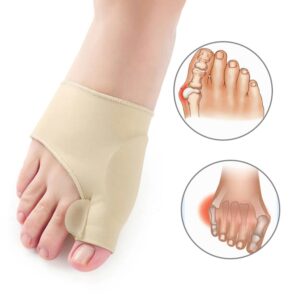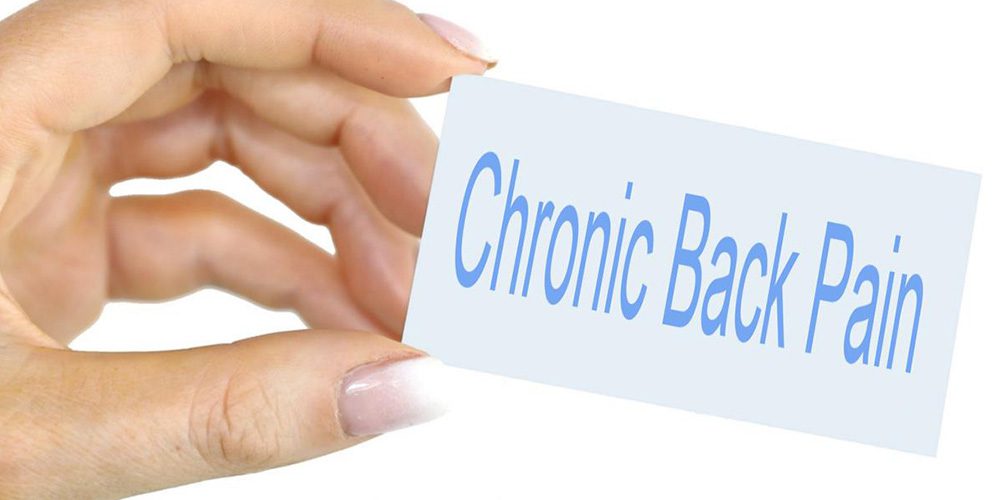The human knee is an amazing piece of engineering, made up of a complex network of bones, tendons, ligaments, and cartilage. It allows us to walk, run, jump, and carry out so many other everyday activities. We don’t usually think about it until something goes wrong and its functioning is disrupted. Knee swelling can be caused by injury or trauma, medical conditions such as osteoarthritis or rheumatoid arthritis, and infections such as septic arthritis or gouty arthritis caused by a buildup of uric acid crystals in the joint. This can lead to pain and impaired mobility. In these situations, it’s important to know what to do in order to ensure fast recovery and lasting relief from the symptoms.
The knee joint is formed where three bones meet: the femur (thigh bone), tibia (shin bone), and patella (kneecap). The bones are held together by various ligaments which provide stability when walking and running, meaning that it can absorb forces placed upon it during physical activity. Additionally, there are two more ligaments that limit the rotation and bending of the joint; the medial collateral ligament on the inner side of the knee which prevents outward movements and the lateral collateral ligament on the outer side which stops inward movement. Together they hold all parts securely in place while allowing sufficient gliding motion between them when we move our legs back and forth.
Knee problems can affect anyone regardless of age or gender but they become increasingly common with advancing years due to repeated stress being applied over time as well as natural wear and tear caused by simply growing older. Injury is also a major factor leading to knee pain with statistics showing that sports injuries comprise over 50% of cases yearly across both amateur athletes along with professional ones alike who train harder still yet are frequently exposed to greater risks despite their stringent preparations taken prior to participating.
The severity of the symptoms experienced varies drastically; some may only experience slight discomfort, while others could have difficulty standing and walking. Unless it is treated quickly, prolonged exposure to these conditions can result in the full loss of mobility and function. This should be taken seriously as soon as possible.
This article sheds some light on symptoms, causes, diagnosis and treatments for knee swelling. If you experience any of the symptoms mentioned above, it is important to seek medical attention right away in order to prevent further damage or complications. Your doctor will be able to give you a thorough physical examination, determine the exact cause of your condition and advise on what course of action would be best for your specific case.
What Causes Knee Swelling?
There are several potential causes of knee swelling. The most common include:
• Injury or trauma – Knees are vulnerable to injuries from activities such as sports or falls; these can lead to swelling due to tissue damage and inflammation.
• Osteoarthritis – This form of arthritis causes cartilage damage that can result in swelling in the joint.
• Rheumatoid arthritis – Rheumatoid arthritis is an autoimmune disorder that can cause inflammation in the joints, leading to swelling.
• Infections – Bacterial infections of the joint like septic arthritis can cause swelling and tenderness around the area.
• Gout – Gouty arthritis is a type of inflammatory condition caused by a buildup of uric acid crystals in the joint, which can lead to pain and swelling.

How Can You Address Knee Swelling?
Fortunately, there are several steps you can take to reduce knee swelling and make sure it doesn’t come back:
• Rest your knee as much as possible while also applying ice (if needed). This will help reduce inflammation and healing time by preventing further injury or irritation. For best results, wrap a bag of ice (or another cold compress) around the swollen area for 15-20 minutes at a time, several times per day.
• Take anti-inflammatory medications such as ibuprofen or naproxen sodium if recommended by your doctor. These drugs reduce inflammation caused by injury or medical conditions related to knee swelling. Consult with your doctor before taking any new medications as they may interact with existing medications you’re taking or have unwanted side effects on their own.
• Use assistive devices when walking or exercising so that your knee isn’t stressed too much while it recovers from its injury/illness/inflammation. Devices such as crutches, braces, splints, etc., will help support your leg while protecting it from further harm during activity.
• See a physical therapist for special exercises tailored specifically for strengthening your affected leg muscles without putting undue stress on your swollen joints—this will prevent future injury and promote healthy recovery from existing ones lasting long-term relief from symptoms like pain and discomfort due to swellings caused by joint dysfunction such as osteoarthritis and rheumatoid arthritis.
When Should You See a Doctor About Knee Swelling?
Knee swelling should not be taken lightly; even though many cases improve with self-care measures noted above, some forms require professional attention if they don’t begin improving after several days of home treatment – especially when accompanied by fever/chills, red streaks emanating from near area indicating infection (signs of septicemia), unyielding pain (something more serious than muscle strain), disfigured shape of surrounding skin due to edema (water retention.
If you experience any of these indicators, it is essential to seek medical help right away as they may be a sign of more serious health issues that require surgery or medication. Acting quickly could save your life! Be sure to take into account associated risk factors and other potential signs that are hiding below the surface calm exterior – this will ensure the best possible outcome.
Diagnosis
When it comes to diagnosing knee swelling, a physical examination is one of the most important steps.
During this exam, the doctor will check for swelling, tenderness and inflammation around the affected area. He or she will also look for evidence of any underlying medical condition that could be contributing to the problem such as osteoarthritis or rheumatoid arthritis.
In addition to a physical examination, there are a number of other tests a doctor may perform in order to arrive at an accurate diagnosis. These tests include:
• X-rays – This imaging test can help identify breaks, fractures and other bone damage that could be causing swelling in the knee joints. It can also show evidence of arthritis or gouty deposits in the joint which could be causing inflammation and pain.
• Ultrasound – Ultrasound imaging is often used to look for signs of soft tissue structures such as muscles, tendons, and ligaments in cases where x-rays don’t give enough information.
• Magnetic Resonance Imaging (MRI) – MRI scans create detailed images of cartilage, tendons and ligaments which can be used to diagnose problems like torn ACLs and meniscus injuries; it also helps detect tumors in rare cases where they might be present as well as giving more information about issues like bursitis or cysts on the kneecap itself.
Depending on your circumstance and initial tests, further examinations could be required. Arthroscopy is used to assess the condition of a joint visually, as well as take sample tissue if needed for biopsy in order to detect not only cancer but other potential diseases too. Also, fluid drainage can help remove excess by providing relief from pressure almost immediately.
While doctors may rely heavily on technology for diagnosis today, it’s always best to obtain a professional opinion. Even if you have limited time and resources, attempting self-diagnosis could be dangerous as making incorrect assumptions might worsen existing conditions due to something that was missed. Therefore, visiting a physician is highly recommended instead of trying to diagnose yourself.
Treatment
When it comes to treating swollen knees, the main goal is to reduce pain and inflammation while restoring mobility and function. Treatment options vary depending on the cause of the swelling and can include rest, medications, physical therapy, and even surgery.
Rest: Resting the affected knee can help reduce both swelling and pain. It is important to avoid activities that exacerbate or worsen symptoms. Ice may also be used for 15-20 minutes at a time, several times a day, to decrease inflammation and reduce pain.
Medications: Non-steroidal anti-inflammatory drugs (NSAIDs) such as ibuprofen can help reduce inflammation and pain associated with knee swelling by blocking certain hormones that increase inflammation in the body. Corticosteroids are another type of medication that can be injected directly into the joint itself to further reduce inflammation quickly.
Physical Therapy: Physical therapy helps strengthen muscles around the knee joint so that they can better support it during movement and activities such as walking or running without causing further irritation or pain due to instability of the joint structure. This type of treatment also helps improve the range of motion within the joint so that movement becomes easier again with less stiffness than before starting therapy sessions.
Surgery may be recommended as a last resort if other treatments fail to adequately alleviate the symptoms, or when damage to structures within the joint space impedes movement. For example, arthroscopic knee surgery is conducted by making small incisions and inserting instruments into the affected area. This procedure can repair torn ligaments and remove pieces of cartilage from within the joint space that causes difficulties in motion; afterward, patients experience improved mobility.
To brace or not to brace…
Wearing a knee brace, knee sleeve or cast can be a helpful and effective treatment for swollen knees. Knee braces are worn to provide support and compression around the affected joint in order to reduce pain and help stabilize it.
Knee sleeves are usually made of neoprene and worn to help with muscle soreness and keep the joint warm while providing some protection from further damage.
Lastly, casts are typically used after surgery or trauma to protect the joint while it is healing but can also be used to immobilize the joint if swelling persists.
The pros of wearing a brace, sleeve or cast include:
• Protection from further injury or damage
• Pressure distribution over the entire area of the knee
• Improved stabilization of the knee when walking or running
• Reduction in pain levels due to compression on surrounding tissues
• Increased movement range for activities such as sports
The cons of wearing a brace, sleeve or cast include:
• Limited mobility due to restricted movement
• Lack of ventilation leading to increased sweating in the affected area
• Discomfort due to a reduction in the natural flow of body fluids around the joint which can cause cording (the formation of thick cords beneath the skin)
• Deformity if not sized correctly
• Unsightly appearance which may cause embarrassment in public
Usually, the pros outweigh the cons when it comes to treating swollen knees with braces, sleeves or casts. However, it is important to discuss these treatment options with your doctor before making any decisions as they will be able to advise you on the most effective course of treatment for your individual needs.

Some last words
We hope that this article has helped you understand the different treatments for swollen knees, and how to choose the best option for your situation. If you have been struggling with swollen knees, it can be helpful to hear from others who are also going through a similar experience. We would love to hear from you in the comments section below.
Show us your journey – why did your knee start to swell, what treatments proved successful for you, and how has this impacted the way you live?
We encourage everyone to support one another by taking the time to read and leave thoughtful comments on each subject matter. This not only helps those seeking advice but also connects us all as we learn more about each other and our shared struggles. With this knowledge, we can better equip ourselves with strategies to cope with any future issues that arise. Thank you for being part of this community.





















